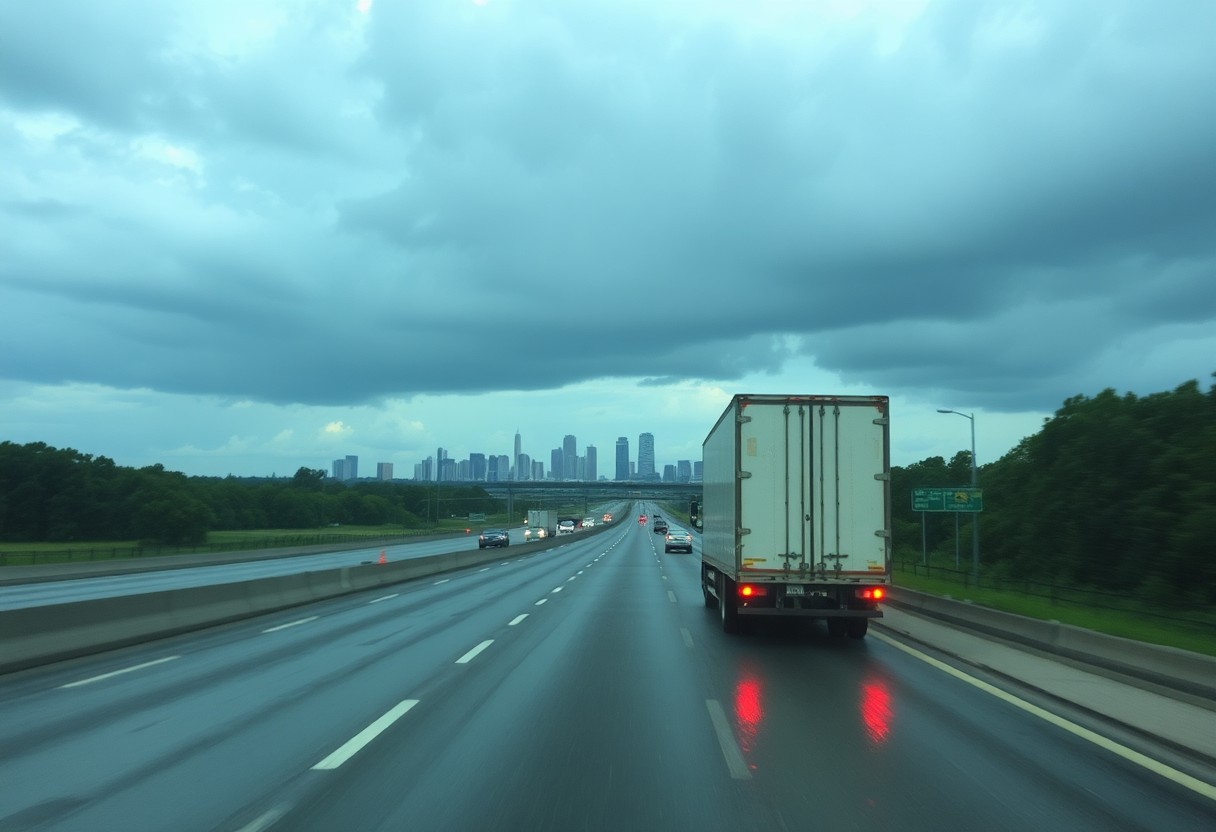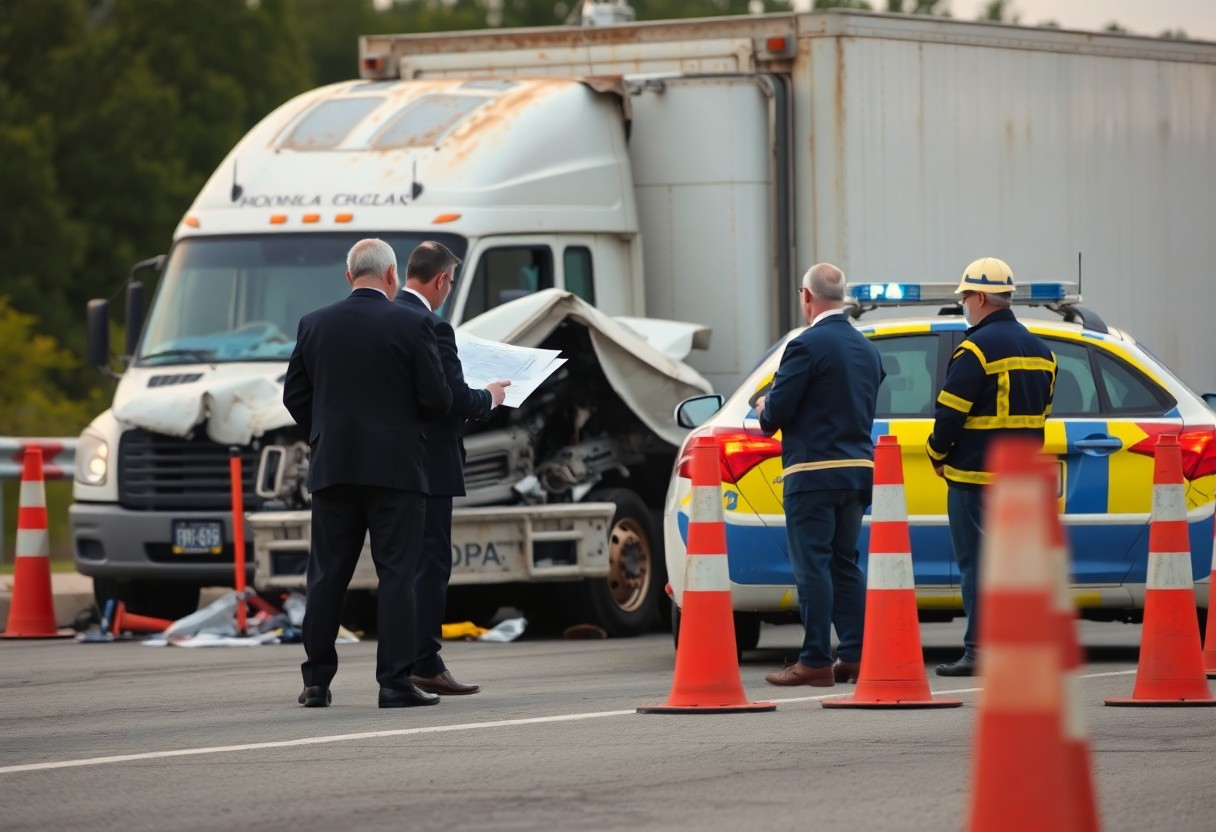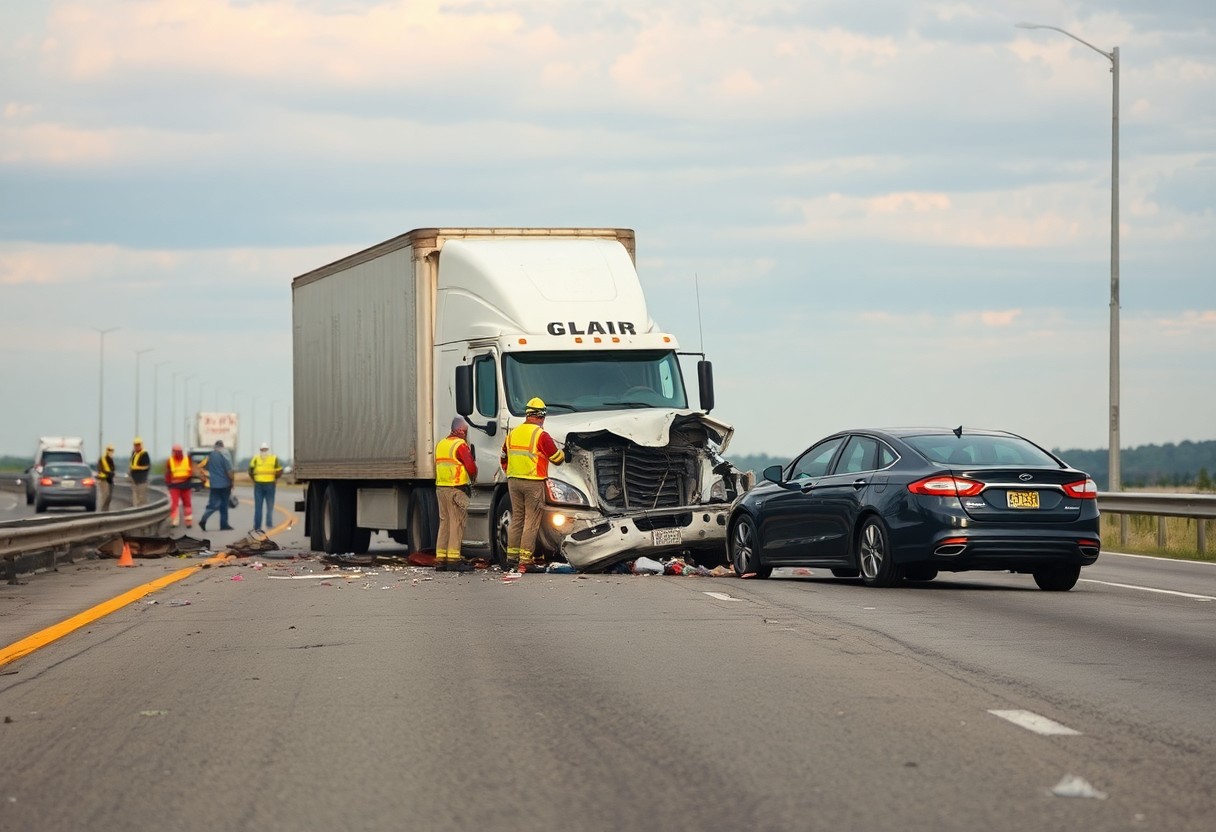Many drivers underestimate the dangers that construction zones pose, especially for trucks navigating Huntsville’s busy roads. As you approach these areas, it’s vital to be aware of how changing conditions and increased vehicle activity can affect your safety. Tight spaces, reduced speed limits, and heavy machinery can create unexpected hazards that require your full attention. By understanding the impact of construction zones on truck operations, you can better protect yourself, your cargo, and others on the road.
Overview of Construction Zones
Your understanding of construction zones is vital for navigating safely in Huntsville. These areas are designated for road work or improvements, often leading to temporary changes in traffic flow and road conditions.
Definition and Purpose
By definition, construction zones are sections of roadways where construction or maintenance is taking place. Their purpose is to enhance infrastructure safety and efficiency, although they necessitate additional caution from drivers and truck operators.
Common Features
Along with warning signs, construction zones typically include barriers, cones, and reduced speed limits, all designed to protect workers and drivers alike. These features are imperative for managing traffic while ensuring safety.
Zones are marked by visible warning signs to alert drivers of upcoming work areas, while barriers and cones help delineate safe zones for pedestrians and workers. Additionally, you will often encounter reduced speed limits aimed at minimizing risks. Sometimes, flaggers direct traffic to streamline flow, while temporary lane shifts may occur, creating potential hazards for large trucks. Understanding these common features can significantly enhance your safety while traveling through and around construction zones.
Truck Safety Concerns
There’s no denying that truck safety is a significant issue, especially in areas with ongoing construction. As a truck driver or fleet manager, you must be aware of how construction zones can increase the likelihood of accidents and injuries. These zones often have changing traffic patterns, reduced visibility, and unexpected detours, all of which can create hazardous conditions that affect your safety on the road.
Accident Statistics
Across the nation, accidents involving trucks in construction zones have seen a notable increase. According to recent data, nearly 30% of all construction zone-related crashes involve commercial vehicles, which can lead to severe injuries or fatalities. Understanding these statistics can help you recognize the real dangers that exist while navigating through these areas.
Risks Specific to Construction Zones
One of the key risks you face in construction zones is the ever-changing work environment. Workers, machinery, and barriers can suddenly appear, leading to unexpected stops or lane changes. Staying alert and adapting to these changes is vital to your safety and that of others.
Specific risks you should be aware of include unpredictable traffic patterns and the presence of road workers in close proximity to your vehicle. Additionally, narrow lanes and temporary signage can create confusion, increasing the likelihood of collisions. Moreover, construction zones often involve reduced speed limits, and your ability to react quickly is necessary to avoid accidents. By understanding and acknowledging these specifics, you can better prepare yourself to navigate construction zones safely.
Traffic Management Strategies
It is important for construction zones to implement effective traffic management strategies to ensure the safety of all road users, including truck drivers. These strategies help minimize chaos and enhance the flow of traffic, especially in high-density areas like Huntsville. By using well-planned systems such as detours and clear signage, you can significantly reduce the risks that come with navigating through these zones.
Signage and Road Markings
Around construction zones, clear signage and road markings are vital for guiding drivers safely. You will often see bright, reflective signs that indicate lane changes, detours, and warning alerts for upcoming construction. These visual cues play a significant role in keeping you informed and prepared, enhancing overall road safety while traversing these critical areas.
Barriers and Detours
To effectively manage traffic flow, barriers and detours are often implemented in construction zones. These structures not only redirect your path but also protect you and other road users from entering hazardous areas. Properly placed barriers create designated lanes, guiding you safely without causing undue delays.
Even though detours and barriers can add complexity to your driving route, they are important for maintaining road safety during construction. Proper barriers can significantly lower the risk of accidents by physically separating you from construction activities. However, they may also lead to increased travel times, presenting challenges for truck drivers who are often working with tight schedules. Ensuring that you pay attention to detour signage and planning your route ahead of time will help mitigate these issues and keep your journey safe and efficient.
Impact on Truck Drivers
Now, construction zones can significantly affect truck drivers, requiring them to adjust their driving habits and strategies. Increased traffic congestion, reduced lanes, and sudden changes in road conditions demand heightened awareness and caution. As a truck driver in Huntsville, you must stay vigilant to navigate these challenges safely and efficiently.
Experience and Training
Around the world, experienced truck drivers often have a heightened ability to assess and react to unpredictable construction zone conditions. Your accumulated knowledge gained through training and real-world experience equips you with vital skills, enabling you to identify risks and adapt your driving tactics to maintain safety.
Behavioral Adaptations
Experience in construction zones often leads to refined driving behaviors. You may find yourself naturally adjusting your speed, following greater distances, and scanning for unexpected obstacles. These adaptations can enhance both your safety and that of others on the road.
Adaptations in your driving behavior during construction zones can significantly reduce risks. You should prioritize maintaining a safe following distance as this gives you more time to react to sudden stops or obstructions. Additionally, reducing speed helps you navigate tighter spaces effectively, offering improved control. Furthermore, being aware of construction personnel and their signals is critical, as their presence may indicate sudden changes in your path. These positive adjustments not only protect your safety but also contribute to a safer roadway for all drivers and construction workers alike.
Local Regulations and Compliance
After navigating through construction zones in Huntsville, it’s imperative to understand local regulations that ensure truck safety. Compliance with these regulations not only protects you, the driver, but also helps minimize risks for all road users. The guidelines set forth by local authorities dictate how vehicles should operate in these areas, including speed limits and signage, which are designed to keep your experience safe and efficient.
Huntsville’s Safety Protocols
Compliance with Huntsville’s safety protocols is mandatory for all truck drivers. These protocols are established to promote safety and reduce accidents in construction zones. From adhering to speed limits to following detour signs, these measures are in place to ensure that you can navigate construction sites without incident.
Enforcement and Penalties
Protocols regarding enforcement and penalties are firmly established to maintain safety in construction zones. Violators of local regulations may face strict penalties, including hefty fines or even points on their driving record. This system serves as a deterrent, encouraging you to follow the rules not just for your safety but also for the safety of others around you.
Also, the enforcement of penalties can significantly impact your decision-making while driving through construction zones. Ignoring speed limits or other safety protocols may result in substantial fines or even suspension of your driving privileges. Understanding these penalties can motivate you to prioritize safety measures, as a single lapse in judgment can lead to dangerous situations, not just for you, but for construction workers and fellow motorists. Adhering to these regulations helps ensure a safer driving environment for everyone involved.

Recommendations for Improving Safety
Despite the inherent risks associated with construction zones, implementing effective safety measures can significantly reduce hazards for truck drivers. You should prioritize clear signage, proper lighting, and efficient traffic management to navigate construction areas more safely. Regular safety audits and training sessions for both drivers and construction crews can further enhance awareness and prevent accidents, fostering a culture of safety throughout your operations.
Best Practices for Construction Zones
To maximize safety in construction zones, you should clearly mark all work areas and establish designated paths for vehicles. Utilize high-visibility signage and cones to guide drivers, ensuring they are aware of lane changes and potential hazards. Additionally, consider implementing speed reduction measures and maintaining open lines of communication between construction teams and truck drivers to promote a safer working environment.
Collaborations Between Drivers and Contractors
With mutual understanding and respect, drivers and contractors can work together to enhance safety in construction zones. By sharing vital information regarding ongoing projects and specific challenges, you can develop a streamlined process that keeps operations running smoothly and safely.
In addition to regular communication, fostering strong relationships between drivers and contractors can lead to improved safety outcomes. Encouraging joint safety meetings can allow you to address any concerns while discussing best practices tailored to your unique construction projects. When both parties collaborate on safety protocols, the likelihood of accidents decreases, paving the way for increased efficiency and peace of mind for everyone involved.
To wrap up
From above, it’s clear that construction zones significantly influence truck safety in Huntsville. You must remain vigilant while navigating these areas, as changes in traffic patterns, reduced visibility, and potential hazards can increase the likelihood of accidents. Prioritizing your awareness of signage and obeying speed limits can enhance your safety and that of others on the road. Stay informed about ongoing construction projects and adjust your routes accordingly to ensure a smooth and secure journey through these often unpredictable zones.



















